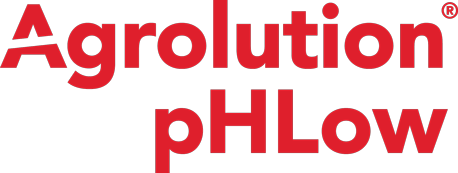General Aspects of Fertigation
Fertigation's precise nutrient application increases the potential crop yield, and reduces the amount of nutrients that need to be applied
Fertigation makes it possible to apply nutrients very precisely according to the nutritional demands of the crop. This has dual benefits: on one hand it can increase the potential yield of a crop with a precise and timely nutrient provision, and on the other hand it means that the amount of nutrients applied can be reduced because there is a reduction of losses through leaching or volatilization. To maximize results, a grower needs to work consistently with WSFs throughout the irrigation cycle.
Consider the Parameters
Before designing a fertigation program, growers must consider several parameters:
- Soil: the soil analysis is a key factor in determining the fertilization plan; knowledge of the nutrient levels in the soil means the grower can adjust the fertilization plan (adding or reducing nutrients). The pH of the soil makes it possible to predict which nutrients will be available in large or small quantities for the plant roots.
- Water: the water analysis is important as it informs the grower which nutrients the water will supply. The common nutrients in water are Ca, Mg, and Cl. Knowing the pH level of the water allows a grower to choose the best formula for the conditions. For example, if the pH level of the water and the bicarbonates are high, the grower will choose fertilizers with an acidifying effect to neutralize the bicarbonates and to reduce the pH of the water (more information is available in the “water quality” section).
- Crop demand: knowing the nutrient demands of various crops during the growing cycle allows the grower to create an accurate fertilization plan that will result in an optimum yield.
Variables for Success
To successfully grow crops, many variables must be taken into account. Besides climatic conditions (such as temperature, humidity, light intensity), pH, and soil nutrient levels, another important factor is the quality of the water used for crop irrigation. When we talk about the quality of irrigation water, we refer to nutrient levels, pH, salts (expressed as the conductivity: EC), and bicarbonates.
Nutrient Levels
The plant receives macro and microelements via the irrigation water. If the level of these nutrients and the requirements of the plant are known, we can determine the optimum fertilizer dosage and thus avoid overfertilization.
pH
The pH value is the degree of acidity of the soil or water, expressed on a logarithmic scale from 0 to 14; 0 is highly acidic and 14 is highly alkaline. A neutral pH has a value of 7.
Each crop needs a certain pH level for growth and harmonious development. The pH of the irrigation water is as important as the pH of the soil where the plants will grow. The majority of crops grow and thrive in an environment with a pH between 5.5 and 6.5. It is important to understand that the pH directly influences the absorption of essential nutrients for the plant’s growth and development. At high pH levels (above 7–7.5), the plants’ absorption of phosphorus, iron, boron, copper, and zinc will start to be inhibited. This is how plants suffer deficiencies, even when using fertilizers to provide the necessary nutrients. If these parameters are not known, it can be tempting to apply greater quantities of fertilizers and thus increase the salinity (EC) around the roots. This can also cause other imbalances, for instance by reducing the absorption of water and nutrients by the plant due to high osmotic pressure created around the roots by the increased presence of soluble salts.
Water Hardness
Water hardness is a key factor in determining the quality of water. Calcium (Ca) and magnesium (Mg) play a major role in the hardness of water. The grower should perform an analysis of the water to accurately check the pH.
EC: Salt Concentration
EC is a number expressed in mS/cm. In general, the EC in the solution used for the plant—the sum of the irrigation water EC and the water-soluble fertilizer EC—should not exceed 2–2.2. This is the recommended EC for soil-grown crops. Water-soluble fertilizers are basically salts so when they are dissolved in water, the salt concentration increases. The values are given in grams per liter and are usually printed on the packaging.




